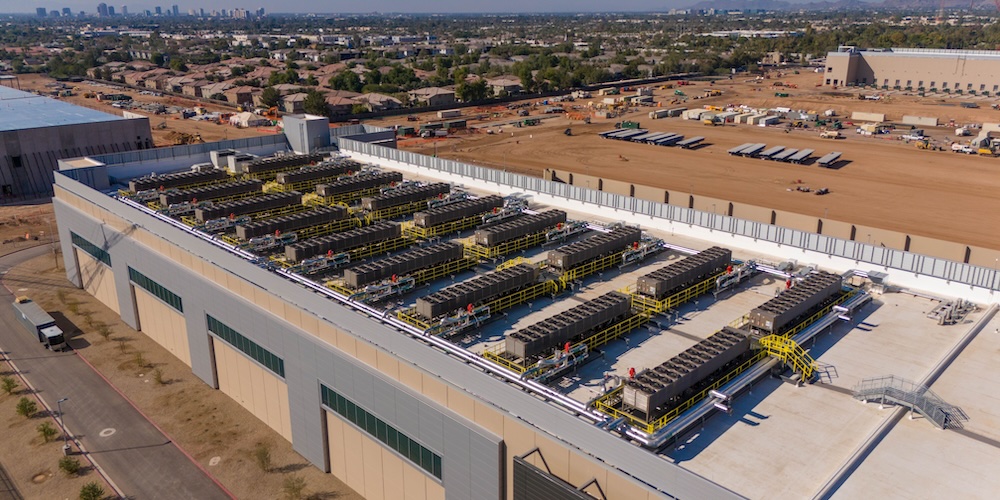— 5 min read
How Data-Driven Decision Making Transforms Construction
Last Updated Apr 28, 2025
Last Updated Apr 28, 2025

As construction companies increasingly adopt technology, they generate vast amounts of data - from site attendance and equipment usage to inventory tracking and project budgets. This wealth of information enables firms to make smarter decisions. Both Building Information Modelling (BIM) and off site construction software now play crucial roles in leveraging data to positively impact projects and business outcomes.
When managing complex, large-scale projects, evidence-based decisions outperform guesswork every time. Moreover, with mounting priorities - such as achieving net-zero goals, addressing labour shortages, navigating regulatory changes, and balancing stakeholder interests - collecting and analysing data has become essential for success.
Table of contents
Building Strong Data Foundations
To make effective data-driven decisions, construction teams need a holistic view of all project data. This information must be accessible and integrated, providing accurate insights from both historical and current sources.
However, even real-time data has limited value without a planned, resource-loaded construction programme. By tracking resources and progress against such a programme, companies can ensure their data-driven decisions remain accurate and impactful.
Plenty of Tier 2 and even Tier 1 companies don’t do resource-loaded programmes, which are programmes that take into account three things: material, labour and equipment. Or, if they do them internally, many don’t disclose them to clients. They give you the accurate costs - the actual sum of the resources. I cannot track progress in real-time unless I track those resources.
Mubtasar Mubtasar
Project Manager
UK Research and Innovation
Harnessing BIM’s Data Potential
One of the most powerful applications of construction data is BIM - which fundamentally revolves around data management. Unfortunately, many firms underutilise BIM because they misunderstand its purpose. BIM creates a data-rich digital building model, extending far beyond simple software usage.
It’s not about the software. It’s about the whole process of connecting data into the software and bringing stakeholders together to work in that platform, and integrating different types of data together.
Mubtasar Mubtasar
Project Manager
UK Research and Innovation
Companies seeking to leverage their data more effectively must first correctly understand BIM and its various levels. This understanding unlocks the concept of a 'digital twin', which reveals detailed insights about construction projects. For example, window specifications can include design details, manufacturer information, dimensions, and placement - all valuable data points for project planning.
At advanced BIM levels, companies can track and manage budgets directly through their models. This capability transforms how construction data informs critical decisions. With Level 5D BIM, teams integrate precise cost information for every project phase, enabling accurate budget tracking and cost estimations. These financial insights directly support data-driven decision-making. The question remains: how many companies currently utilise Level 5D BIM?
Tackling Data Implementation Challenges
Resource-loaded programmes, BIM, and other innovative methodologies help construction companies harness their data effectively. However, several obstacles often impede data-driven decision-making:
- Limited technical skills
- Overwhelming data collection and administrative burdens
- Siloed teams that fail to share information
- Disconnected systems that prevent data integration
These challenges significantly reduce the impact that data can have on a company's operations and decision-making processes. Fortunately, two key strategies can help organisations overcome an ineffective data culture: upskilling and role allocation.
Upskilling Team Members
The construction sector urgently needs enhanced technology skills. While technology offers tremendous potential to improve efficiency, professionals must first learn to use these tools effectively. This transition requires mindset shifts, quality educational resources, and accessible pathways into technology-focused construction careers.
The mindset is very important in construction and we need to change our mindset here. There are tried and tested techniques which people have used for a long time, but it’s time to change. We are already running late on this. Everyone should read Modernise or Die, Mike Farmer’s report on the construction sector’s need for transformation, to learn about this.
Mubtasar Mubtasar
Project Manager
UK Research and Innovation
Clarifying Data Responsibilities
Leadership teams must determine who will handle data collection and analysis within their organisation, then clearly establish these roles and expectations. Without clarity regarding individual data responsibilities, companies will struggle to develop an effective data culture. These requirements can also be incorporated into subcontractor tender processes within the Scope of Services.
Client firms should mandate the use of BIM from the time of the procurement of consultants. For example, they can tell them explicitly that they need to use certain software solutions that are interoperable, or the level of BIM required, and whatever cost is required, just go for it.
Mubtasar Mubtasar
Project Manager
UK Research and Innovation
Preparing for a Data-Driven Future
Over the next decade, construction companies must fully harness their data potential to drive decisions that keep projects on track and profitable. This evolution will require upskilling, deeper BIM adoption, and AI integration into data workflows. In the coming years, AI will potentially enable firms to compare historical and real-time data, generating predictive insights that help anticipate potential delays or cost overruns based on previous project experiences.
Meanwhile, AI-powered search capabilities for rapid data access are already emerging and will likely become commonplace soon. This advancement will significantly enhance decision-making efficiency, as teams can quickly locate evidence within project data through natural language and generative AI prompts.
AI will play a very important role in accessing the raw data for construction projects. An example is seeing clearly how many design changes happened on a project. Using AI to bring out the data for where things went wrong will be game-changing.
Mubtasar Mubtasar
Project Manager
UK Research and Innovation
Taking Steps Toward Data Transformation
Data-based decision-making should be standard practice for construction companies, yet many firms have considerable work ahead before achieving this goal. To approach the data-driven ideal that project managers envision, organisations must implement appropriate technology and develop essential skills throughout their workforce.
While not everyone needs to become a data specialist, companies must assign relevant roles and responsibilities strategically, which will necessitate significant upskilling. Whether through BIM, new project management techniques, or AI, the industry has numerous opportunities to develop truly data-driven operations.
Categories:
Tags:
Written by
Mubtasar Mubtasar
View profileZoe Mullan
Zoe Mullan is an experienced content writer and editor with a background in marketing and communications in the e-learning sector. Zoe holds an MA in English Literature and History from the University of Glasgow and a PGDip in Journalism from the University of Strathclyde and lives in Northern Ireland.
View profileExplore more helpful resources

Construction Management Software: Essential Tools for Modern Building Projects
Today’s construction projects face tighter timelines, rising costs, and increasing compliance pressures. Teams must juggle numerous variables while communicating across multiple job sites, making traditional tools increasingly inadequate. Fortunately, construction...

Building for Big Data: An Industry-Wide Challenge to Innovate
The demand for innovative and efficient data centres is skyrocketing. From powering cloud computing and the exponentially growing use of artificial intelligence to supporting the ever-growing internet of things (IoT),...

Building the Ideal Project Team for Data Centre Construction
The digital age has ushered in an era of unprecedented data consumption, fuelling a seemingly insatiable demand for data centres. These complex facilities are driving a construction boom, placing immense...

Construction Scheduling: An Essential Guide
Every successful construction project begins with a solid plan, and at its core lies an effective construction schedule. From breaking ground to final handover, staying on time and within budget...